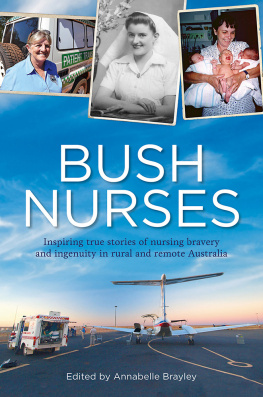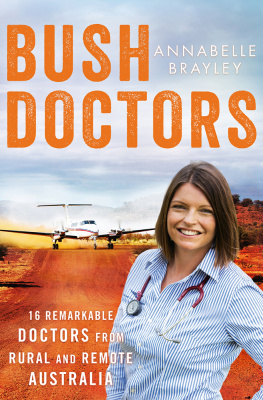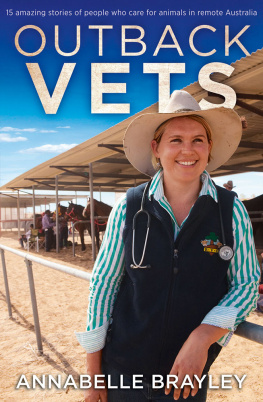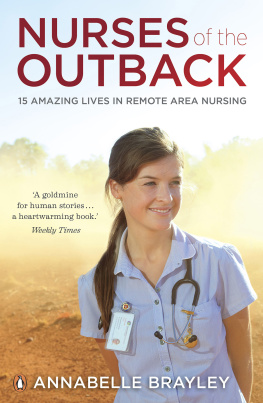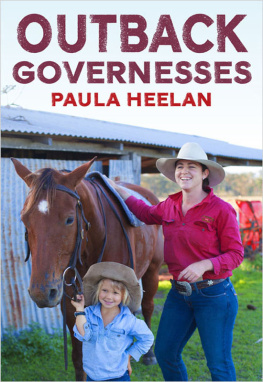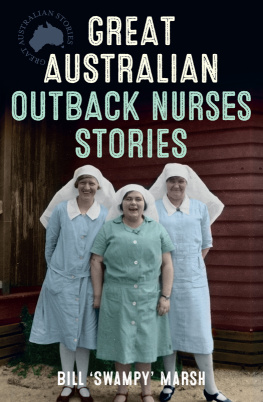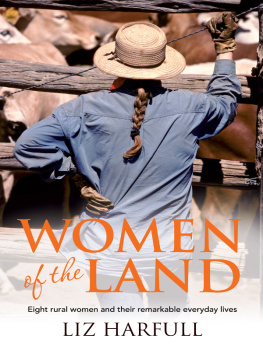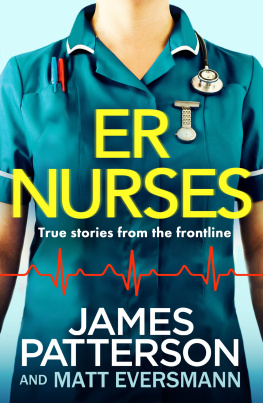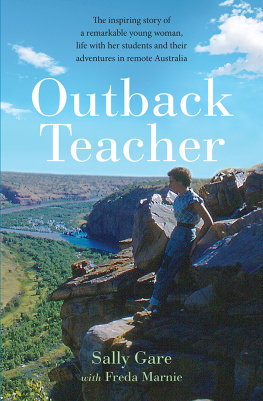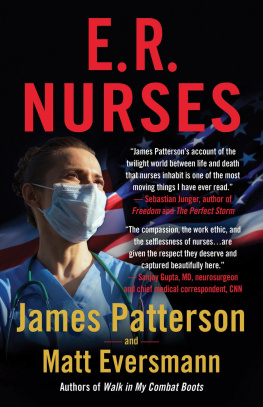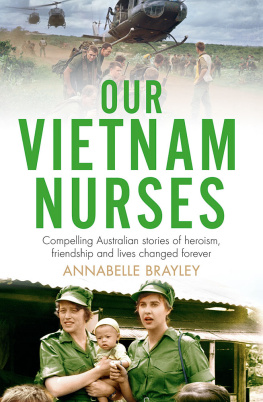Foreword
You know what youve got to do. Put a glove on, put your hand in and push the presenting part off the cord so that it can still pulsate. Well come as soon as we can.
It was 10.30 at night and I was the District Medical Officer on call for the RFDS in Alice Springs. I was responding to an emergency phone call from a remote area nurse in Ampilatwatja, 270 kilometres north-east of Alice Springs. She had a woman in established labour with a cord prolapse.
With the assistance of a local traditional Aboriginal midwife, she managed to give the woman some pethidine, put her on oxygen, got her to crouch on her elbows and knees on a bed and inserted her gloved hand into her birth canal. Holding the babys head off the cord enabled lifesaving oxygenated blood to continue to flow to the baby.
Meanwhile, back in Alice Springs, we had taken off in a Navajo and were about ten minutes in the air when a safety light indicated the door hadnt closed properly. As per safety protocol we returned to base to check it out, delaying our departure for another agonising forty minutes. It was over two hours before we finally arrived in the community. I doubted the baby would be alive. At the clinic we found an exhausted nurse still in position and feeling paralysed from her fingers to her neck. I asked if she could feel a pulse in the cord but she was past feeling anything. When I listened with the Sonic-Aid, there it was: kathump ... kathump ... kathump . The baby was alive!
We got everything ready for a delivery and resuscitation. I still doubted the baby would survive but I phoned the paediatrician on call in Alice Springs hospital to warn him to be ready for a very sick baby. Then I said to the nurse, You take your hand out and Ill put mine in, which we did, and I discovered that the cervix was fully dilated and the babys head was well down. We turned the woman over onto her back and got her to push, and in less than a minute there was a very flat but alive baby on the bed. With a bit of help the baby was soon crying; it was wonderful!
We got back to Alice Springs about 4.30 a.m. with a perfect baby and a happy mother and the paediatric staff waiting for us wondering what all the fuss was about. Next afternoon I rang the nurse at the community and asked how she was. She said, After the plane took off, I helped put out the flares and then went back and cleaned up the clinic and got to bed about 4 a.m. At 6 a.m. someone knocked on my door asking for Panadol. Thats remote area nursing. Nobody in the community seemed to realise the magnitude of what she had done she had saved the life of that baby and was still on call for everyone else.
Working in remote health is a huge challenge, one that I first became familiar with as a fifth-year medical student on an elective in the Southern Highlands of Papua New Guinea. During my time there, I delivered my first babies and learnt how to resuscitate newborns from the community midwife; learnt to cross-match blood under paraffin lamplight from a Pidgin-speaking health worker; and how to do lumbar punctures and set up external fixation of femoral fractures from local nurses. It was a see one, do one, teach one school of medicine. I saw amazing things and gained many invaluable skills, and all from nurses and community health workers. It was a life-changing experience.
Six years in rural Africa as a young doctor further reinforced the fact that nothing is to be gained from keeping knowledge and skills secret from any clinical staff. I learnt how to deliver breeches and do vacuum extractions from highly experienced midwives, and performed craniotomies and laparotomies under the guidance of a Russian trained Nepali surgeon. Sharing knowledge and skills across professional boundaries and traditional scopes of practice was essential to the way you worked in Third World situations. There was no room for professional hierarchies and egos.
When I came back to Australia I worked as a District Medical Officer in Alice Springs for eight years. As a result of my experiences in PNG and Africa, I was able to help establish the CARPA (Central Australian Rural Practitioners Association) Standard Treatment manual. It has become the bible for remote area staff and, together with the CRANA plus procedures manual, demystifies emergency treatment and procedures, as is illustrated by another remote health story.
I was flying out to a single-vehicle rollover near Uluru. There was a nurse from Imanpa, a nearby Aboriginal community, whod gone as first responder. I was able to talk to her on a satellite phone newly installed on the RFDS plane. Shed done the right thing and left the person in the car because he was a query spinal injury. He also had an obvious chest injury, judging from her description of the skin over his chest feeling crackly, indicating an air leak from a pneumothorax. Shed put an IV line in and a neck collar on, put him on oxygen and given him pain relief. She was on her own. We flew over the scene but couldnt land and had to fly to a nearby cattle station and drive back. As we were flying over, the nurse reported via the sat phone that the patient had deteriorated and was very distressed, and she could no longer feel a pulse. I said, You have to shove a needle in his chest. Shed never done anything like that. I said, Just shove a needle in over where the chest is crackling. She said, Oh, oh, oh... and then the line went dead. Once we landed it took another twenty minutes to get to the accident scene, where the nurse was standing with an expression somewhere between terror and triumph on her face. The man had a 16 gram needle sticking out of his chest and was alive. She had saved his life. Without that needle hed have been dead from a tension pneumothorax.
There are lots of stories like this... and this book is full of them. Some will raise the hairs on the back of your neck, some will make you laugh, and some will make you cry. Others will tell you how it just is or has been, as the stories range across a century of nursing in rural and remote areas of Australia.
There used to be a standing joke that if you were a nurse and had a pulse you could work in remote health services. That was never true, but it is true that the further away you are from metropolitan areas, the more likely it is that a nurse will be the most experienced health practitioner. Rural and remote areas have always relied on the character and skill of nurses, and will continue to do so. Well-resourced and well-supported advanced-practice nurse practitioners, training and working within genuine multi-disciplinary team environments, are the future. As you read this book you will realise that the nurses and health practitioners who choose to work out there are well up for it.
Dr Nicholas Williams
MBBS, DRACOG
MSc(PHC), FAFPHM, FACRRM
Acknowledgements
The plan for this book was to publish a collection of stories either from or about rural and remote nurses and to raise some money for a worthy cause. Frontier Services was chosen as the worthy recipient in acknowledgement of their 100 years of service to inland Australia.
It was publisher Andrea McNamara who got the ball rolling for this project. Thank you for asking me to edit this book, Andrea its an opportunity for which I will be forever grateful. One of the first conversations I had with her was about my concern that nurses would be reluctant and/or too busy to write their stories, assuming I could track down enough of them in the first place. My networks around the outback are pretty good but Id never have managed this without Anne-Marie Bourchers and Geri Malone from CRANA plus . Anne-Marie, in particular, promoted the call for stories through their magazine, encouraged everyone she knew to participate and made it possible for me to attend the 2012 CRANA plus conference in Cairns, a captive audience of rural and remote nurses from all around Australia. Her grace in the face of my endless requests for contact details was remarkable.

